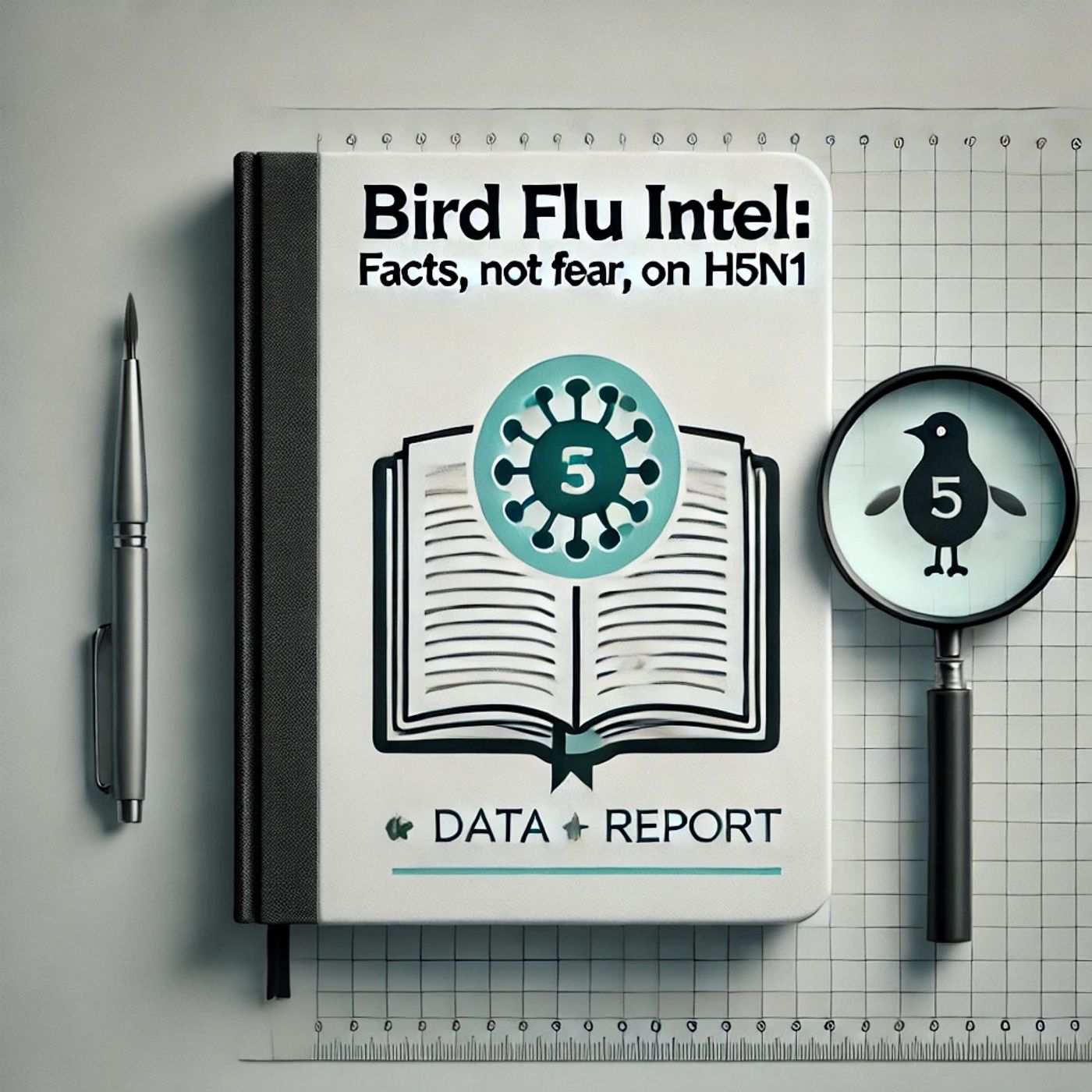Podcast Episode Details
Back to Podcast Episodes
H5N1 Bird Flu: Expert Insights Reveal Rare Human Risk and Importance of Fact Based Understanding
Bird Flu Intel: Facts, Not Fear, on H5N1
Welcome to Bird Flu Intel, the show where evidence and rational thinking prevail over rumor and panic. Today, we tackle the myths and realities of H5N1, the virus behind recent headlines — and, too often, misinformation.
Let’s start by busting some of the main misconceptions circulating on social media and the news:
First myth: H5N1 easily spreads from person to person and is causing a human pandemic. The fact is, according to the CDC and reported by the Global Virus Network, human cases remain rare, with just 26 infections globally in 2025, including eight deaths in Cambodia and a few cases in the U.S., but crucially, there’s no evidence of person-to-person spread. Most cases stem from direct contact with sick or dead birds or dairy animals, not from casual contact or airborne transmission between humans.
Second myth: If H5N1 infects cows or other mammals, a massive pandemic is inevitable. Here’s what the science says: Yes, H5N1 has shown a worrying ability to infect some mammals, including cows, foxes, sea lions, and even house pets. Nearly 1,000 U.S. dairy herds have tested positive, and research published in Nature confirms that bovine H5N1 can cause systemic infection in animals. However, according to top virologists from the Global Virus Network and CDC, so far the virus has not gained the genetic changes needed to spread efficiently among people. They’re monitoring closely for mutations, but no mammal-to-human or human-to-human transmission is currently confirmed.
Third myth: H5N1 in poultry means all poultry products are unsafe for humans. The reality is, standard cooking kills influenza viruses. Outbreaks have led to culling of millions of chickens and ducks since 2022, but eating properly cooked poultry does not transmit the virus. Risks arise only through direct contact with infected animals or contaminated environments.
Fourth myth: All forms of H5N1 are equally dangerous to humans. In fact, H5N1 is highly pathogenic in birds, killing poultry within 48 hours, but most human cases, especially in the U.S., have been mild with symptoms like eye redness and fever. Active surveillance and prompt response are keeping the public risk low.
So how does misinformation about H5N1 spread and why is it harmful? Sensational headlines, viral social media posts, and outdated information often outrun the facts. This leads to panic, poor decision-making, harmful behaviors—like shunning safe foods or ignoring public health advice—and makes control efforts harder for health officials. Misinformation also erodes public trust.
To separate facts from fiction, use these tools:
Check sources: Is the information from credible public health authorities like the CDC, WHO, or Global Virus Network?
Look for recent updates: The H5N1 situation evolves. Trusted sources regularly update their guidance.
Watch for consensus: Listen for agreement among scientific experts, not outlier claims.
Beware of emotional language or conspiracy theories; these rarely align with factual reporting.
Now, what is the current scientific consensus? H5N1 remains a high concern for agriculture and wildlife, but is not yet a major direct threat to humans. Surveillance, biosecurity on farms, and quick containment are crucial. However, virologists warn that influenza A viruses mutate often. The more H5N1 circulates among different animals, the greater the chance of it acquiring the ability to efficiently infect people. Areas of scientific uncertainty remain: Could future mutations change how H5N1 spreads? Could it recombine with human flu strains? These questions are under active research, and experts continue to urge caution and preparedness, not fear.
Thank you for tuning in to Bird Flu Intel. Come back next week for more myth busting and science-first coverage. This has been a Quiet Please production—f
Published on 2 weeks ago